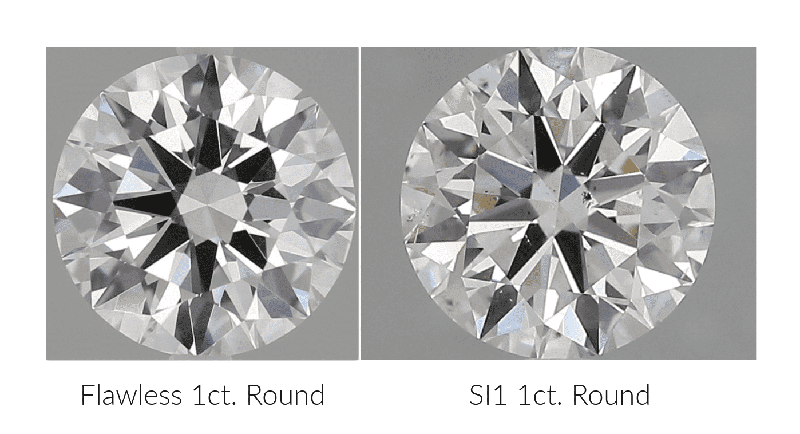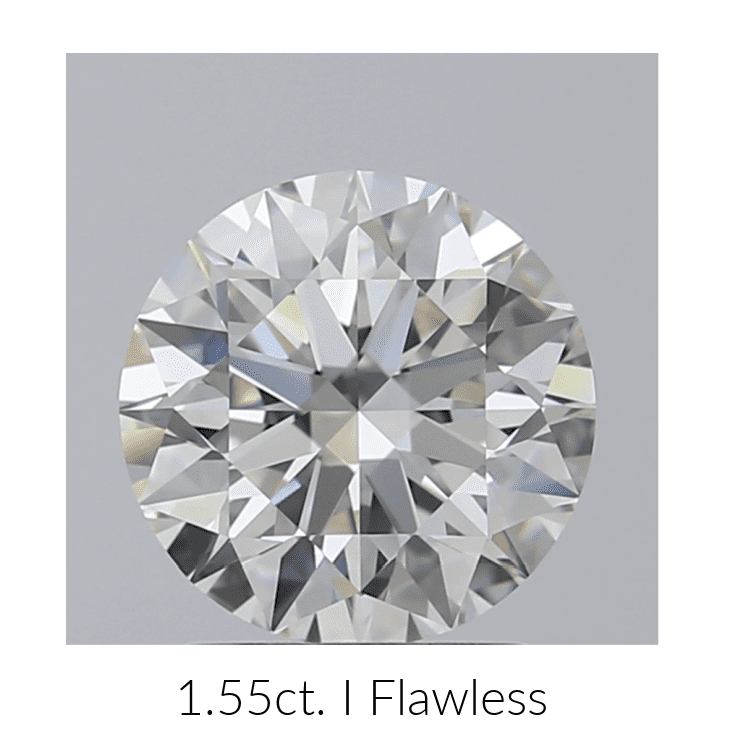Flawless Diamonds: Understanding Grade and Characteristics
- Clarity grades diamond purity; Flawless = no flaws under 10x magnification
- Rare Flawless diamonds are Type II, nitrogen-free, formed deep in Earth’s mantle
- Cutting flawless stones is tough—Type I diamonds trade color for clarity at larger sizes
- Flawless suits step cuts or collectors; lower grades (SI1) sparkle similarly in other cuts
- No natural inclusions make certification critical to verify Flawless diamonds
Let's Be Clear - What is Clarity
Clarity is defined as follows: a quality of transparency and purity. So the clarity of a diamond is a measure of just that - how much or how little is kicking about inside the stone that could affect one or both of those things - a light reflecting fracture, a black mineral inclusion, a cloud of tiny little dislocations. And it is fair to say that the less in there, the better. We don’t want anything to tarnish our view.
Back in the day, a diamond was either with or without flaws or imperfections, with the best of them heralding the accolade ‘perfect’. (now, you tell me, if someone tried to sell you a ‘perfect’ stone, would you believe them?). In the 1930s, the Gemological Institute of America (GIA) decided to tighten up the term, and the trade was presented with eleven grades, from Flawless to Included, each with very specific parameters. And the star pupil? Flawless. Obvi.
What does it take to be Flawless?
I have heard rumors that there is no such thing as a Flawless diamond. I would say that is just a tad unfair. A diamond is clarity graded according to what is visible under 10x magnification, so your gemologist’s standard handheld loupe. A ‘Flawless’ diamond must not have any visible feature either inside or on the surface of the stone, exclusive of a laser inscription on the girdle or perhaps a hard to spot extra facet. That, in itself, is a pretty high bar.
A diamond is up to 3.5 billion years old. It was formed deep in the mantle of the earth at extreme temperatures and pressures. After a few million years, they were then spewed up to the surface of the earth by a forceful magma and left to reside for another few million, until they eventually caught our attention. You try going through all that and still managing to dust yourself off and look spotless under 10 x magnification - even after the prettification of a cut and polish. Fine. Zoom in a little further (using a gemological microscope at 60 -100 x magnification), and there is a chance you are going to spot something - but give it a break. A Flawless diamond is a rare feat of nature.

A Journey into the Center of the Earth
Rare indeed. Flawless diamonds account for an extremely small percentage of all polished gems. Why? Because most of the rough stones suitable for cutting to this quality fall into a rather elite ‘Type II’ category (around 2% of diamond production). To break this down simply and swiftly, diamond is formed exclusively of carbon atoms bonded in a certain way. However, nitrogen, being an incredibly abundant element and about the same size as carbon, often likes to squeeze itself into the growing diamond. A whopping 98% of all mined diamonds - or Type I - have a high quota of this hitchhiker. In fact, it is the nitrogen that will cause that yellowish tint in diamond. Type II diamonds are (almost) nitrogen free. That is because a high proportion of this rare breed are formed ‘superdeep’ in the mantle, at depths around 500km - at that depth, nitrogen has other stuff it would prefer to be doing.
So not only do they lack a load of inclusions, they are colorless (Type IIa).*
Now you get it. See a D Flawless for sale and that is one special stone. With one special price tag. Over to you.
Clever Cutting
I must not sideline the majority here. Some of the more ubiquitous type I diamonds can scrub up ok. If they are big enough. But this is down to the talent - and indeed the inclination - of the cutter. Sometimes, it is just not worth it. Take one rough stone with a smattering of inclusions. If they opt to cut out the flawless stone, they may be sacrificing what could have been two or three smaller VS1 diamonds. The math doesn’t add up. And there is another snag - the bigger a Type I diamond, then the more likely they are to show color. So, unless you want to fork out for a rare D Flawless, if you go big, you are going to be sacrificing color for clarity.

So why go for a Flawless?
I have narrowed it down to two good reasons:
One - it's all about the story and you want that rare stone - for whatever reason. If you have the money, why not? But, if that is the case, go with a D color. Make sure you are getting Nature’s best.
Two - it’s all about the look and you want a step cut. That window to the diamond’s soul. Think of a step cut like a swimming pool in a five star hotel. You’ll never see a leaf floating at the bottom of one. Same applies.
If, however, you are just about the sparkle and to hell with the story, I implore you, do not buy a Flawless diamond. It will be a waste of money. Any other cut other than a step cut, and you can get away with dropping all the way down to SI1 in clarity and still be none the wiser that your diamond had carried a few small friends up with it from the mantle.
When to Fear the Flawless
Faults or blemishes in or on a diamond act as its fingerprint. To a gemologist, they are little legends. When we spot a little mineral inclusion or a small remnant of crystal face (natural) on the girdle, we can proclaim, with resounding confidence, that the diamond is natural.
The problem with a Flawless diamond is that we have nothing to go on. And if it is D Flawless - yikes. If that is what you were after, great. Just make sure you have a genuine certificate to verify what it is you are paying for.
To check out some amazing Flawless diamonds for yourself, visit:
*or, in another of Mother Nature's more inventive moments, a brilliant blue, if you add a pinch of boron (type IIb).


Flawless Diamonds FAQs